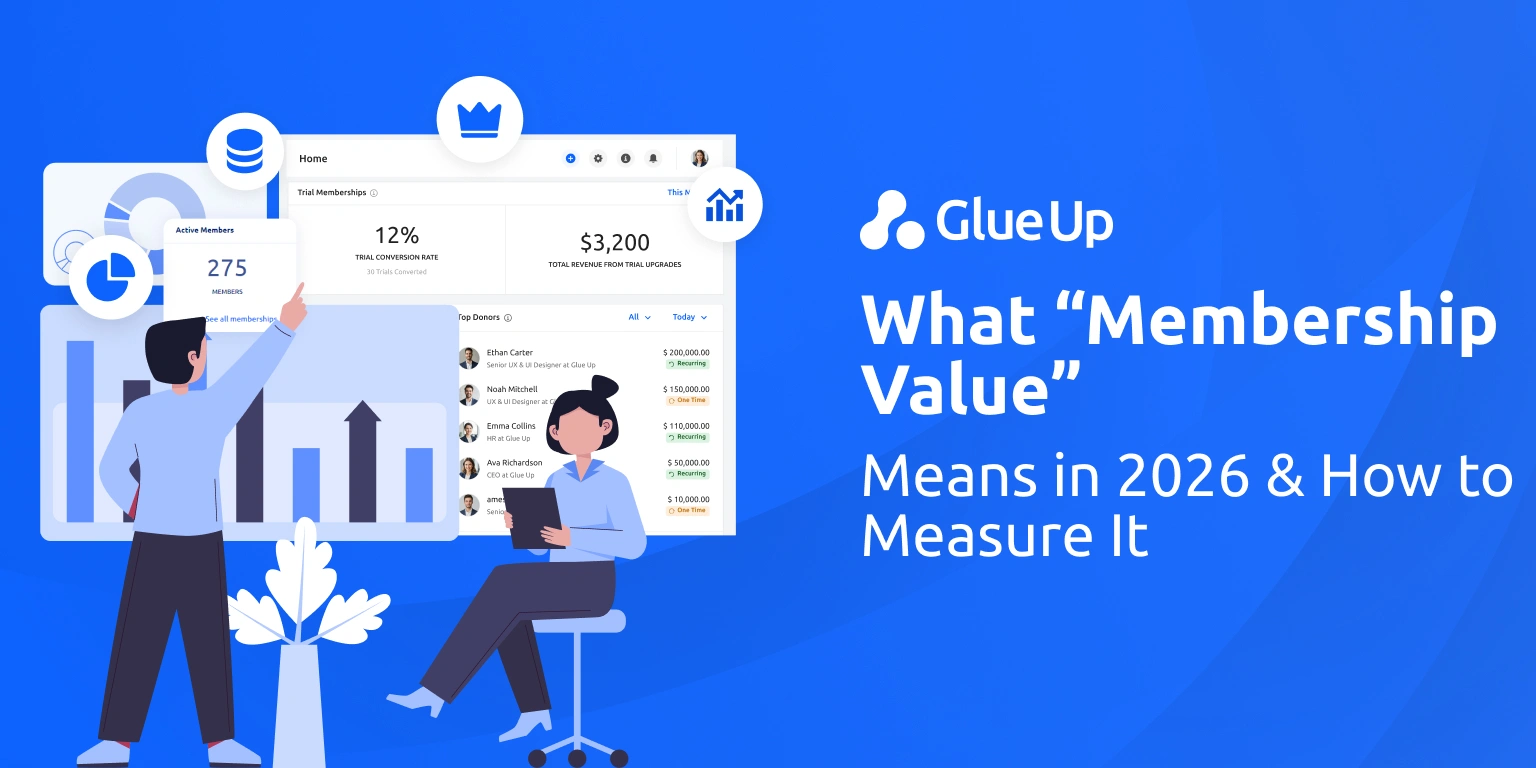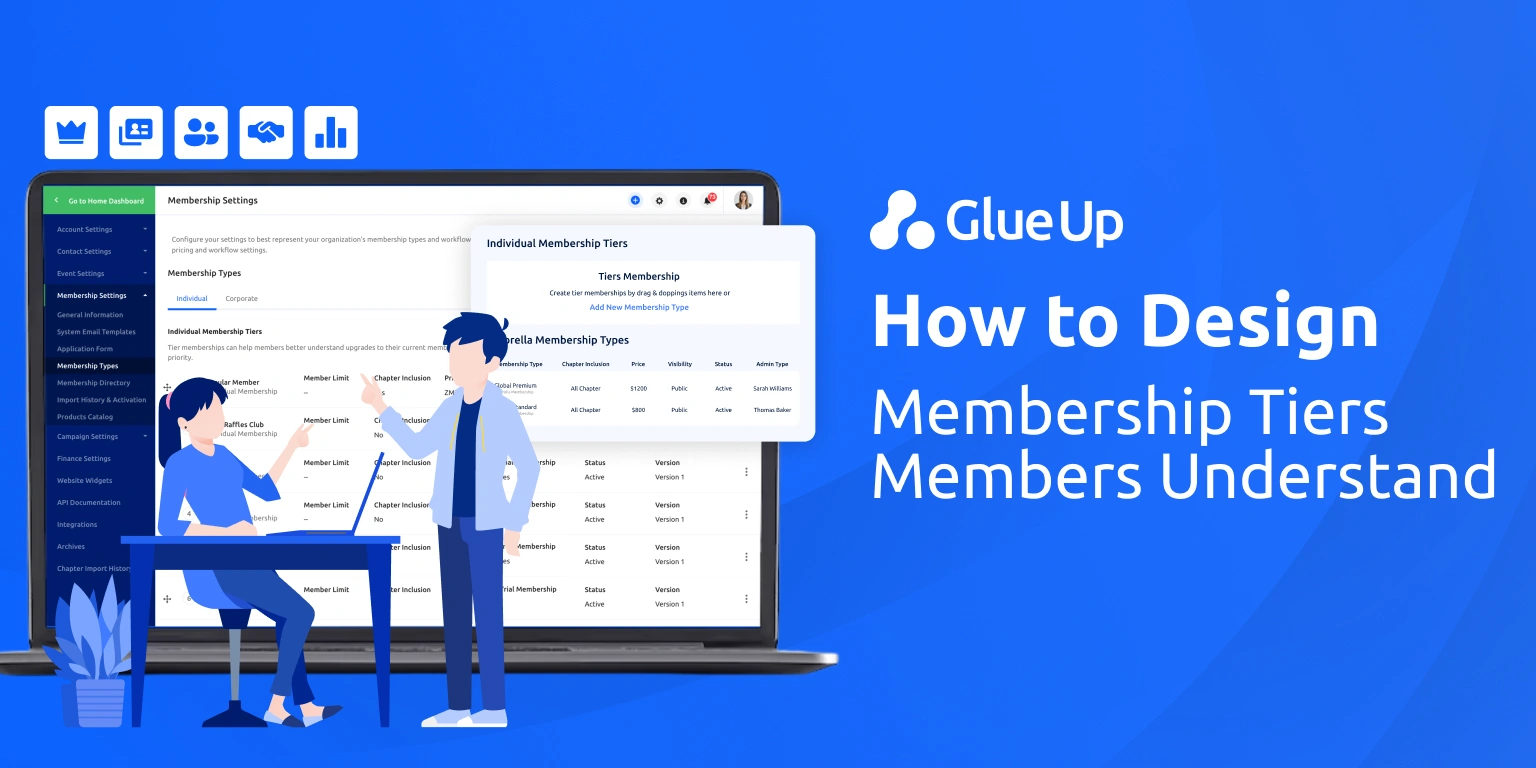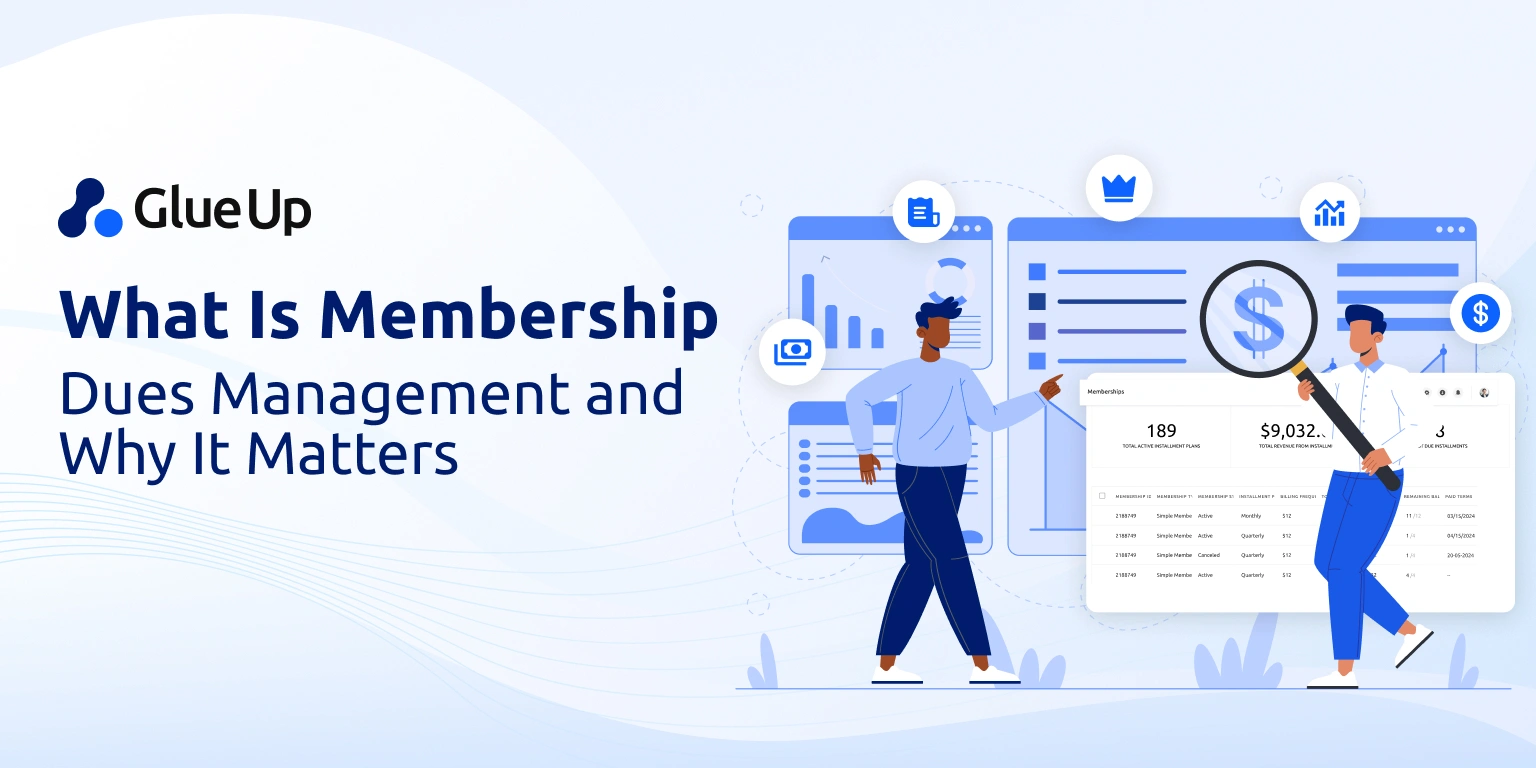
Budget transparency is no longer optional. In 2026, association members expect visibility into how every dollar connects to impact, not just a financial summary. According to McKinsey & Company, organizations that make financial data more accessible see up to 30% higher stakeholder trust and engagement. For associations, the same principle applies. Your membership budget report isn’t just a compliance document; it’s a communication tool that builds credibility, reinforces accountability, and drives participation.
Yet most reports remain difficult to interpret, overly technical, or disconnected from what members care about. Therefore, in this post, you’ll learn how to:
- Communicate financial insights with clarity and relevance.
- Format data using visual and narrative best practices.
- Use tools like member portals and finance dashboards to keep reports interactive and transparent.
To learn about our all-in-one association software, watch the video below and book a demo to see how you can simplify financial reporting and turn data into engagement.
Key Takeaways
- Position your membership budget report as a strategic communication tool, not a compliance exercise.
- Focus on outcomes and insights, connecting financial data to member value and impact.
- Segment financial details by audience, offering the right depth of visibility through dashboards and portals.
- Apply visualization and commentary to improve comprehension and trust across all member segments.
- Use consistent, interactive communication — quarterly updates, finance dashboards, and role-based access — to maintain transparency year-round.
Why Member-Friendly Budget Reports Matter in Associations
Let’s start with defining a membership budget report: a structured view that maps dues and non-dues revenue to programs, tiers, and outcomes across the member lifecycle. Think membership tiers, benefits, renewal cohorts, events, advocacy, and shared overhead.
Each line carries a cost structure, forecast, and return profile that should ladder up to your strategic plan.
Why Clarity Drives Adoption
Your members don’t just want accuracy; they want interpretability: allocations, rationale, and performance commentary that connect dollars to outcomes. Organizations that improve financial communication see measurable gains in alignment and decision speed; clear reporting practices correlate with higher stakeholder buy-in. Treat clarity as a governance lever, not a formatting task.
Reference Point: Teams that surface budget insights in plain language drive materially better execution across cycles, with fewer re-work loops and faster approvals.
From Ledger to Narrative
A member-friendly budget report answers three executive questions:
- Efficiency: Are dues and program spend aligned to tiered value propositions and retention drivers?
- Alignment: Do budget variances explain program outcomes, not just totals?
- Foresight: What reallocation improves next-cycle ROI across events, advocacy, and services?
Anchor the narrative in KPIs: Operating margin by program, ARPM by tier, variance to forecast, cost-to-serve, and event ROI.
Data Visibility as Governance
Move beyond static PDFs. Use finance dashboards and your member portal to publish standardized summaries, drill-downs, and downloadable statements. Interactive access reduces inquiry load, improves literacy, and turns reporting into an engagement experience. Benchmark your reporting layer against budget management platform practices to tighten cadence, version control, and auditability.
Quick KPI Set
- Report Readability Score: % of members who can correctly interpret three core KPIs.
- Variance Clarity: % of line items with plain-language variance notes.
- Access Utilization: Member portal views of the budget pack per month.
- Decision Velocity: Average days from budget release to board approval.
Align Budget Reports with Member Expectations
Most associations still treat budget reporting as disclosure instead of engagement. But a membership budget report should function as a decision-enabling tool that helps members, chapters, and boards interpret performance against strategic goals.
The real shift is from static reporting to interactive communication. Members no longer want PDFs; they want accessible dashboards with clear context. Because today, real-time visibility into data helps members feel part of the financial decision process, not just observers of it.
A transparent report doesn’t oversimplify; it clarifies. When financial communication aligns with your governance narrative, you reinforce accountability and trust across every member segment.
Communication Techniques that Build Understanding
Think of reporting as storytelling through data. Instead of presenting “budgeted vs. actual,” frame each section with intent and outcome. Add explanatory captions for variances, short summaries below charts, and simple notes on cause and impact. According to Fyle, structured commentary can improve reader comprehension by up to 35%.
Visual hierarchy also matters. Start with an executive summary (total revenue, expenses, surplus/deficit, etc.), then drill down by category, program, or tier. This layered structure keeps complex data digestible and actionable.
Formatting for Cognitive Efficiency
Budget report formatting requires cognitive engineering because reports overloaded with grids or unlabeled charts naturally create friction, especially in associations with multiple chapters. So, use horizontal layouts for comparisons, align figures to the same decimal scale, and replace dense text blocks with short, insight-driven notes.
You can follow the IMIS Enterprise Reporting Guidelines as a baseline: consistent formatting, standardized headers, and drill-down functionality improve accuracy and interpretation.
Technology as a Clarity Multiplier
Delivering clarity to modern members and stakeholders requires the right infrastructure. A connected finance dashboard inside your member portal centralizes budgets, variances, and commentary, ensuring everyone references a single source of truth. When combined with automated workflows and notifications, these dashboards transform budgeting into a participatory process.
The next section builds on this foundation: the five most effective ways to design and deliver budget reports that both inform and engage members while reinforcing financial governance.
5 Tips to Make Your Budget Reports Member-Friendly
At the core, a membership budget report is about accessibility, interpretation, and engagement, not just accuracy. Your goal is to make members understand how money turns into mission.
Below are five actionable strategies to elevate financial communication from a technical requirement to a leadership advantage:
Start with Outcomes, Not Line Items
When you open your next report, don’t start with numbers — start with impact. Members don’t care about the 12% increase in operational expenses until they understand what that expense produced. Begin each section with an outcome statement that ties spend to value.
For example:
- “Program expenditures increased by 12% to expand training access to 400 more members.”
- “Marketing spend rose due to a campaign that lifted event attendance by 18%.”
This narrative-first approach reframes your budget presentation as a story of investment and return. According to HashMicro, contextualized explanations improve report comprehension by more than 40%.
Pro Tip: Add a one-line takeaway below each chart summarizing the outcome in plain English. It’s the difference between data being seen and data being understood.
Segment Financial Information by Member Relevance
Not all members need the same depth of financial detail. Segment your membership budget report the way you segment your engagement strategy: by what each audience values.
- Board and committee leaders: Require deeper analytics, variance explanations, and forecasts.
- General members: Need high-level clarity — what the organization earned, spent, and achieved.
- Corporate or institutional partners: Focus on ROI metrics and sponsorship value.
In your member portal, create role-based dashboards that align with this segmentation. For instance, chapter chairs can view expense breakdowns for their region, while general members can view summarized charts of dues allocation.
This structure mirrors what top-performing associations call “governance-tier reporting”—aligning financial visibility with decision accountability. It makes financial data feel personal, not bureaucratic.
Visualize the Message, Not Just the Math
Good visualization doesn’t mean more charts; it means better ones. The goal is cognitive efficiency: helping members quickly grasp the relationships between revenue, costs, and results.
Follow three design principles:
- Use Contrast Wisely: Keep color palettes simple: blue for revenue, grey for expenses, green for surplus, etc.. Over-coloring kills focus.
- Label Directly On Data: Don’t force readers to chase legends or keys.
- Highlight Insights, not everything. Emphasize outliers and trends, not every variance.
Example: Replace a cluttered pie chart with a stacked bar comparing “Dues vs. Non-dues Revenue Over Three Years.” It communicates trend and proportion at once.
According to Cledara, visuals paired with concise commentary improve retention and trust in financial communication.
In short, design visuals like executive dashboards. Each should answer one question in five seconds or less.
Translate Variances Into Insight
Numbers change, but insight is what members value. Don’t just show a variance column; explain why it happened and what it means.
Example:
- “Event revenue fell short due to shifting attendance from in-person to hybrid formats. Adjusted marketing for digital channels next quarter.”
- “Membership revenue exceeded forecasts as renewal automation increased early renewals by 9%.”
If you want members to feel confident in leadership, don’t just explain the past. Instead, show what’s being done about it. That’s what separates reporting from accountability.
Make Reporting a Continuous Dialogue
Financial transparency shouldn’t happen once a year. Members lose context if they only see numbers during the annual meeting. Treat financial communication as an ongoing dialogue across the fiscal year.
Post monthly or dquarterly summaries in your member portal, share quick updates in newsletters, or hold short “budget brief” webinars. This keeps financial performance visible and removes the element of surprise from future budget discussions.
You can also use your finance dashboards to display real-time KPIs such as dues collected, event revenue, and cost-to-serve ratios. As Axelor’s guide to budget management highlights, regular visibility strengthens accountability and decision agility across organizations.
Consistent communication signals control, maturity, and transparency — qualities members instinctively trust in leadership.
Strategic Summary
Member-friendly reporting is about translating data into trust. When you combine outcome-based storytelling, segmented detail, visual clarity, actionable insight, and consistent dialogue, you transform budget reporting into a strategic differentiator.
Your next membership budget report shouldn’t just prove stewardship. It should make every member think, “I understand exactly how my contribution drives impact.”
The Glue Up Difference: Streamlining Financial Communication for Associations
You can apply every reporting principle perfectly, but if your tools are fragmented, clarity will collapse under complexity. That’s why associations need a financial system that doesn’t just record data but operationalizes it.
Glue Up’s finance management software is purpose-built for associations that want to elevate financial communication from spreadsheets to strategy. It doesn’t replace your accounting platform; it integrates with it, bringing context, automation, and accessibility into one interface.
Here’s how it supports your next membership budget report:
- Centralized Data Visibility: Instead of toggling between systems, you can view all revenue streams (membership dues, event income, sponsorships, and expenses) in one consolidated dashboard.
- Automated Budget Reporting: Generate budget reports with pre-set categories, filters, and visual summaries. Every leader accesses real-time data that’s formatted for presentation, not just accounting.
- Finance Dashboards: Visualize forecasts, cash flow, and P&L summaries using dashboards that members and board directors can easily interpret. This bridges the gap between accounting detail and strategic insight.
- Role-Based Access: Define which chapters, committees, or officers can view or edit reports. Governance remains consistent even as leadership rotates.
What makes Glue Up different is not the data, but how the data flows. Your finance, membership, and events information are already linked across CRM, Membership, Event, and Email modules, which means your budget reports automatically reflect operational performance. That’s how associations move from static summaries to dynamic, decision-ready insights.
Turn Financial Reporting Into Strategic Leadership Before 2026
In 2026, financial transparency will define organizational credibility. A membership budget report is no longer just a ledger of performance; it’s a reflection of how your leadership communicates value. When members can see how budgets align with outcomes, they invest in your mission, not just approve your numbers.
The associations that will lead the next fiscal cycle are those that transform financial data into member insight. With the right structure, governance, and systems, your budget reports become more than numbers; they become a strategy narrative.
If you’re ready to align clarity, communication, and confidence in one platform, book a demo today to see how Glue Up’s finance management software helps you turn transparency into growth.
Frequently Asked Questions
What is a membership budget report?
A membership budget report outlines how an association allocates and manages its financial resources across programs, tiers, and initiatives to communicate transparency and impact to members.
Why should budget reports be member-friendly?
Because clarity drives engagement. Member-friendly reports translate complex financial data into accessible insights, helping members understand how dues and revenue support shared goals.
What should be included in a membership budget report?
Include revenue breakdowns, expense categories, program funding, and clear outcome summaries. Add context using visuals, plain-language commentary, and alignment with strategic objectives.
How can finance dashboards improve member communication?
Finance dashboards display live metrics— dues collected, event revenue, expense trends — allowing members to interpret financial performance in real time through the member portal.
How can Glue Up’s finance management software support this process?
Glue Up centralizes financial reporting, automates budget summaries, and integrates them into your member portal, helping you publish accurate, transparent data that members can easily understand.
Quick Reads
- How to Build a Revenue Engine with Association Management Software
- Add-On Cart for Member Retention & Growth
- Simplify Multi-Currency Payment Posting for Community Chapters With Glue Up + Paygage
- AI Automation for Event Registration & Beyond
- Integrating AI into CRM for Membership Growth
- How to Build a Chapter Event Calendar
- What Is All-In-One Association Software?
- AI-Powered Member Check-In Software



